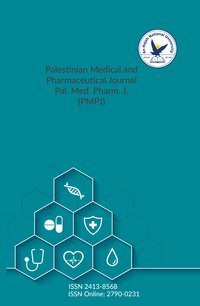Design, Molecular Docking, Molecular Dynamic Simulations, MM-GBSA Study, and Pharmacokinetics Prediction of New Imidazolidinone Derivatives as Selective COX-2 Inhibitors
Article info
2024-07-15
2024-07-31
2024-08-16
None - None
Keywords
- Molecular docking
- Molecular dynamic simulation
- MM-GBSA
- Imidazolidinone
- Rofecoxib
- COX-2
Abstract
Cyclooxygenase-2 (COX-2) is necessary for inflammation and pain, making it a prime target for anti-inflammatory drugs. Selective COX-2 inhibitors can reduce inflammation without the gastrointestinal side effects often seen with non-selective non-steroidal anti-inflammatory drugs (NSAIDs). This study aimed to find new imidazolidinone derivatives as potential selective COX-2 inhibitors. Seven imidazolidinone derivatives were designed and tested using molecular docking with Glide software; the crystal structure's source of enzyme (protein data bank code: 5KIR) and removed solvent molecules during preparation to create a clean and suitable environment for docking simulations; the binding energies of these compounds were analyzed using the Prime-MMGBSA module, molecular dynamic simulations lasting 100 nanoseconds were performed using the Desmond program, Drug-likeness properties were predicted using Swiss-ADME. Molecular docking emphasized the importance of hydrophobic and hydrophilic amino acid residues for ligand stability. Compounds 3 and 5 showed strong affinities to COX-2, with docking scores of -11.569 and -11.240 kcal/mol, respectively, compared with reference ligand rofecoxib was -9.309 kcal/mol. Molecular dynamics simulations confirmed the stability of the COX-2-compound 3 complex, revealing consistent ligand-protein interactions. MM/GBSA calculations indicated that all compounds had favorable binding free energies. Additionally, all compounds demonstrated acceptable drug-likeness profiles and desirable pharmacokinetic properties. The study identified new imidazolidinone derivatives, particularly compound 3, as potential selective COX-2 inhibitors with strong binding affinities and stable interactions. These findings support further investigation and optimization of these compounds as therapeutic agents for inflammatory conditions. The recommendation of this work will focus on the in vivo evaluation of these compounds to confirm their therapeutic potential and further refine their pharmacological profiles.
Design, Molecular Docking, Molecular Dynamic Simulations, MM-GBSA Study, and Pharmacokinetics Prediction of New Imidazolidinone Derivatives as Selective COX-2 Inhibitors
المؤلفون:
معلومات المقال
2024-07-15
2024-07-31
2024-08-16
None - None
الكلمات الإفتتاحية
- Molecular docking
- Molecular dynamic simulation
- MM-GBSA
- Imidazolidinone
- Rofecoxib
- COX-2
الملخص
Cyclooxygenase-2 (COX-2) is necessary for inflammation and pain, making it a prime target for anti-inflammatory drugs. Selective COX-2 inhibitors can reduce inflammation without the gastrointestinal side effects often seen with non-selective non-steroidal anti-inflammatory drugs (NSAIDs). This study aimed to find new imidazolidinone derivatives as potential selective COX-2 inhibitors. Seven imidazolidinone derivatives were designed and tested using molecular docking with Glide software; the crystal structure's source of enzyme (protein data bank code: 5KIR) and removed solvent molecules during preparation to create a clean and suitable environment for docking simulations; the binding energies of these compounds were analyzed using the Prime-MMGBSA module, molecular dynamic simulations lasting 100 nanoseconds were performed using the Desmond program, Drug-likeness properties were predicted using Swiss-ADME. Molecular docking emphasized the importance of hydrophobic and hydrophilic amino acid residues for ligand stability. Compounds 3 and 5 showed strong affinities to COX-2, with docking scores of -11.569 and -11.240 kcal/mol, respectively, compared with reference ligand rofecoxib was -9.309 kcal/mol. Molecular dynamics simulations confirmed the stability of the COX-2-compound 3 complex, revealing consistent ligand-protein interactions. MM/GBSA calculations indicated that all compounds had favorable binding free energies. Additionally, all compounds demonstrated acceptable drug-likeness profiles and desirable pharmacokinetic properties. The study identified new imidazolidinone derivatives, particularly compound 3, as potential selective COX-2 inhibitors with strong binding affinities and stable interactions. These findings support further investigation and optimization of these compounds as therapeutic agents for inflammatory conditions. The recommendation of this work will focus on the in vivo evaluation of these compounds to confirm their therapeutic potential and further refine their pharmacological profiles.
Since 2022
Cite Score (Scopus): 0.8
Time to First Decision: 3 Days
Submission to Acceptance: 45 Days
Acceptance to Publication: 64 Days
Acceptance Rate: 17%
Why should you
Publish With Us?
An-Najah National University
Nablus, Palestine
Nablus, Palestine
- P.O. Box
- 7, 707
- Fax
- (970)(9)2345982
- Tel.
- (970)(9)2345560
- (970)(9)2345113/5/6/7-Ext. 2628
- [email protected]
- EIC
- Prof. Waleed Sweileh
The Palestinian Medical and Pharmaceutical Journal (Pal. Med. Pharm. J.) © 2024 by An-Najah University, Nablus, Palestine is licensed under CC BY-NC 4.0
News and Views
